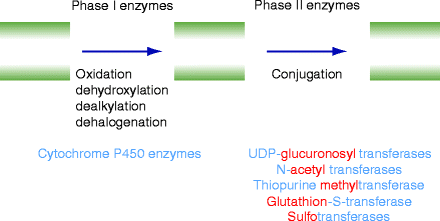

Cytochromes p450 a success story full#
The scientists believe that the integration of the soft-robotic language and machine programming could accelerate progress in the development of 4D materials and unlock the full potential of soft-robotics. The future may witness the creation of self-evolving polymers and perpetual nanomachines capable of synthesizing new molecules at will." Kshatresh Dutta Dubey, co-researcher of the study, added, "We are entering an exciting era for chemistry, where soft-robotics and intelligent design of nanomachines can lead to unprecedented advancements. A total of 595 cytochrome P450 proteins have been identified in seven Trichoderma species. The implications of this discovery extend beyond the realm of biology and chemistry, potentially revolutionizing fields like artificial intelligence design and self-evolving polymers/gels synthesis.ĭr. Trichoderma CYPome embodies a group of cytochrome P450 diverse proteins which are predicted to participate in a spectrum of functions involved in primary, secondary and xenobiotic metabolism. These materials, such as hydrogels produced through 3D printing, resemble enzymes in their ability to sense and induce changes. The findings open up new avenues in soft-robotics research, as 4D materials are gaining significance, driven by external triggers. Sason Shaik, one of the lead researchers. This is an exciting revelation, and we believe that similar mechano-transduction mechanisms of soft-impact cues might be at work in other soft-robot machines in nature," stated Prof. "We have discovered that CYP450s act as soft-robot machines in 'living matters,' displaying a remarkable sensing and response-action capability. Feyereisen R, Genome Biol 2000 1:REVIEWS3003.: Cytochromes P450: a success story. This sensing-response capability creates a soft-robot with a fourth dimension of sensing, something previously unseen in regular 3D matter. Cytochrome P450 is a generic term used to describe a class of enzymes which catalyze the oxidative metabolism of a. The enzyme's restricted space, strategic residue placements, and channels allow it to be a sensitive sensor of the substrate, its own heme changes, and conformational shifts in the active site. The key takeaway from these molecular-dynamics simulations is that the catalytic cycle of CYP450s is complex but follows a logical sequence. This movement generates ultimately a special substance called oxoiron species, which serves the enzyme to oxidize a variety of different substances. These interactions transfer energy, causing parts of the enzyme and the molecules inside it to move. It interacts with the substrate using weak interactions, like soft impacts. The enzyme's structure has a confined space that allows it to act like as a sensor and a soft robot.

This leads to a process called oxidation. In the catalytic cycle of these enzymes, a molecule called a substrate binds to the enzyme. The researchers' simulations demonstrated that CYP450s possess a fourth dimension - the ability to sense and respond to stimuli, making them soft-robot nanomachines in "living matters." Cytochromes P450 (CYP450s) are enzymes found in living organisms and play a crucial role in various biological processes, particularly in the metabolism of drugs and xenobiotics.


 0 kommentar(er)
0 kommentar(er)
